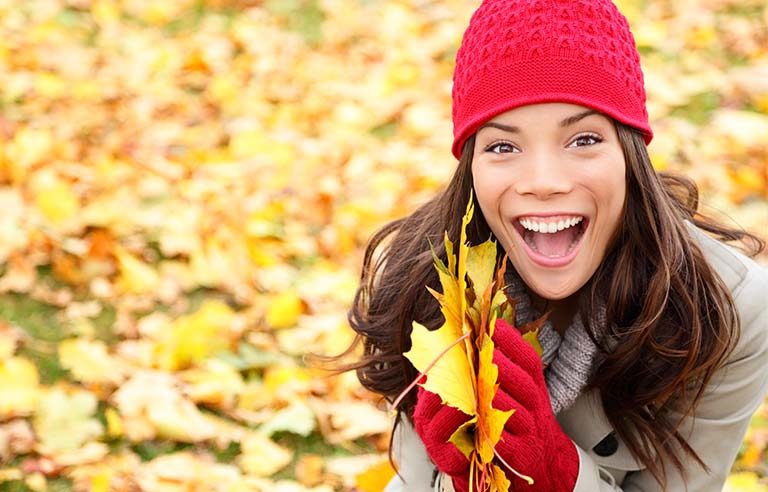It’s fall!

Even if you love summer best, fall is a fun season. Help make it a safe one! What should you look out for? Well, fall is a time for …
Back to school
Once the school year starts, drivers need to be extra cautious as kids walk near roadways and wait for their buses.
- If a bus’s yellow or red lights are flashing and the stop arm is extended, you must stop your vehicle.
- Never pass a school bus from behind – or from either direction if you’re on an undivided road – if it’s stopped to load or unload kids.
- The area 10 feet around a school bus is the most dangerous for kids, so stop far enough back to give them space to safely get on and off the bus.
- Be alert – kids can be unpredictable, and they tend to ignore hazards and take risks.
Falling leaves
Autumn leaves are beautiful – but removing them can be a lot of work! The American Chiropractic Association says homeowners should take care to prevent back injuries, neck strain and shoulder pain while cleaning up the yard.
When raking, use what the ACA calls a “scissors” stance: Keep your right foot forward and left foot back for a few minutes, then switch the positioning of your feet. When bending over, always bend at the knees – not the waist.
If burning leaf piles is part of your plan, keep in mind that the Environmental Protection Agency doesn’t recommend it. “The open burning of leaves produces particulate matter and hydrocarbons, which contain a number of toxic, irritant and carcinogenic (cancer-causing) compounds,” the EPA says. Plus, leaf burning is illegal in many places. Check your local ordinances.
Campfires and fire pits
Fall weather and campfires just seem to go together. But with the fun comes responsibility. The National Fire Protection Association says fire pits and campfires should be at least 25 feet away from all structures and flammable objects.
What should you have on hand to stay safe? A trusty shovel and a hose that’s ready to spray, or a bucket of water, are the preferred tools to quickly put out a fire. If water isn’t available, have a small pile of sand or dirt next to your fire to extinguish it as needed.
When it’s time to put out your fire, start with the bucket of water or hose – or shovels of sand and dirt – you already placed nearby. Then, use your shovel to separate the remaining wood and smoldering embers.
Next, stir the fire remnants around to make sure all embers are extinguished. Then, apply more water, dirt or sand. A fire shouldn’t be allowed to burn out on its own – smoldering embers can reignite or spread and cause a larger fire.
Tailgate parties
It’s football season! Ready to cook up a winning tailgate? Following food safety practices is a must.
Keep the heat: Wrap hot casserole dishes in foil and transport them in insulated containers. If you’re bringing hot takeout food, eat it within two hours of purchase.
Not too hot or cold: Remember two magic numbers when tailgating: 40 and 140. Potato salad, coleslaw and other cold foods should be kept at 40° F or less, while soups, grilled meats and other hot foods must be kept no cooler than 140° F.
Get cooking: Before you put your meat on the grill, check the Safe Minimum Internal Temperature Chart on the U.S. Department of Agriculture’s website. Color isn’t a reliable way to tell if meat is fully cooked, so play it safe by using a meat thermometer.
Don’t let food sit out too long: Perishable foods shouldn’t sit out for more than two hours. When in doubt, throw it out.
Post a comment to this article
Safety+Health welcomes comments that promote respectful dialogue. Please stay on topic. Comments that contain personal attacks, profanity or abusive language – or those aggressively promoting products or services – will be removed. We reserve the right to determine which comments violate our comment policy. (Anonymous comments are welcome; merely skip the “name” field in the comment box. An email address is required but will not be included with your comment.)
